Address: Mahabandoola Road
Year built: 1925–1940
Architect: U Tin, LA McClumpha and AG Bray (architects), Clark & Greig and AC Martin & Co. (contractors)
The architecture of Yangon’s City Hall tells a tale of rising nationalism in the dying decades of colonial rule. It was built over a drawn-out, fifteen-year period during which the world was changing profoundly. At first this massive complex was not intended to be constructed in its present form, with its overt Burmese features. As Sarah Rooney recounts in 30 Heritage Buildings of Yangon, initial plans for a new city hall emerged in 1913. Architect LA McClumpha won the tender. British administrators saw in his designs the promise of “the finest group of architectural buildings in Burma”. But the First World War broke out, funds froze and construction stopped.
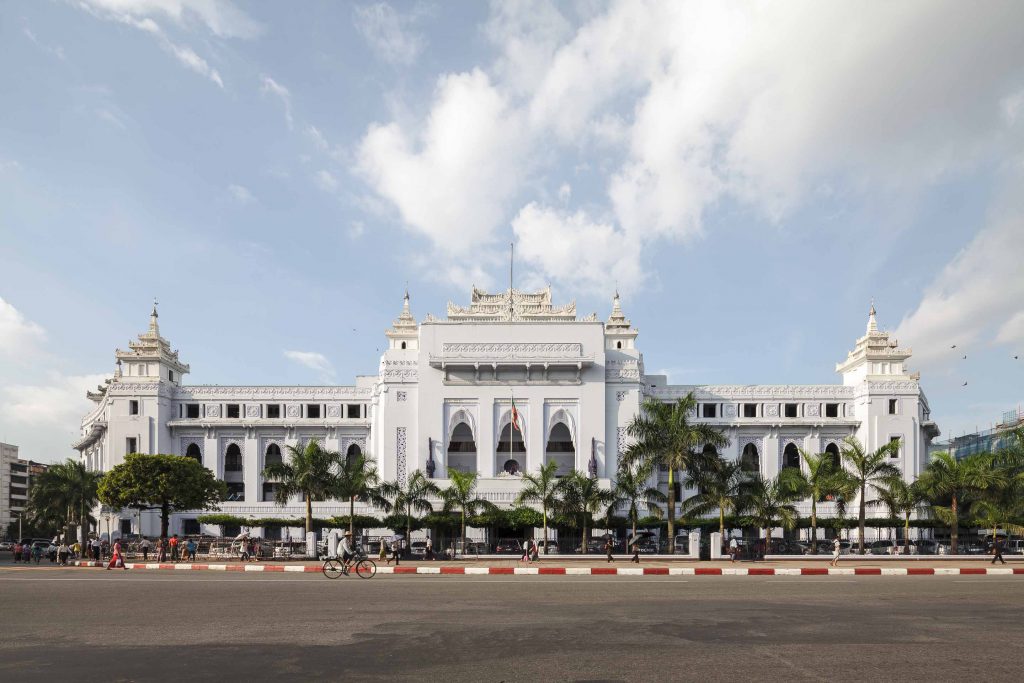
When it resumed in 1925, Burmese nationalists started a debate in the Legislative Council. They demanded Burmese forms inspired by temple architecture from the ancient capital, Bagan. Their campaign overcame Western reluctance. Burmese architect U Tin was invited to revise the designs.
But how much leeway was U Tin given? It is easy to imagine the original design without his additions, such as the peacocks, pyatthat roofs and purple nagas (dragons) on either side of the entrance. The loggia and arcade illustrate the building’s competing visions. On the one hand, the lotus flower motif lining the fourth-floor loggia is in keeping with Buddhist heritage. On the other, the design of the three-storey arcade echoes the colonial architecture of Bombay.
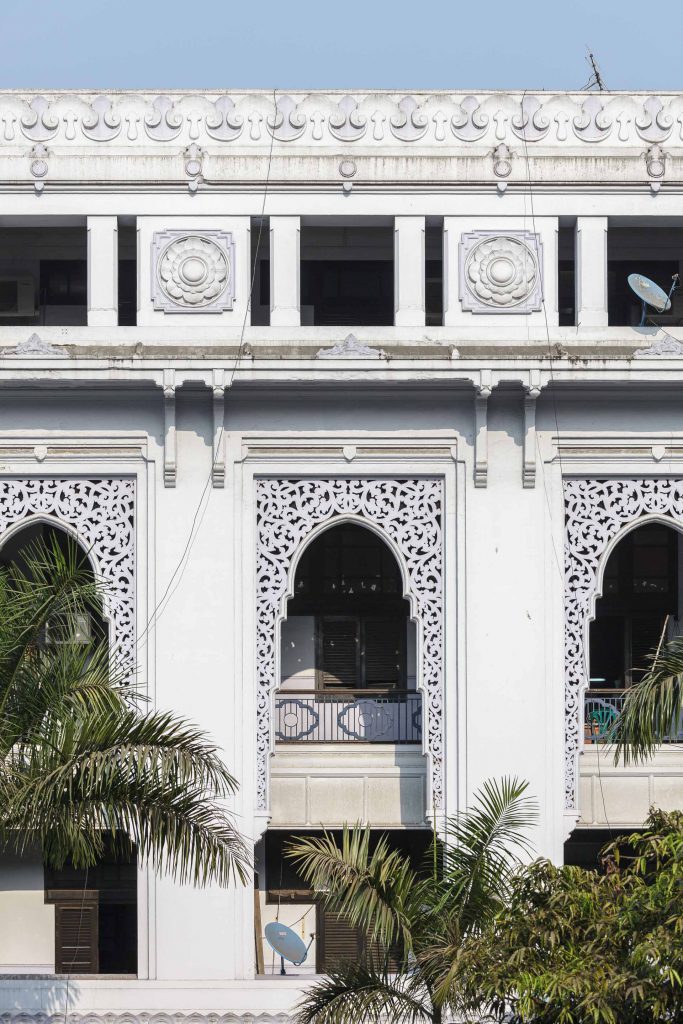
The building used to be painted a cream colour. Before that it was a striking green, at least for a time. In 2011, it was repainted a shade of “luminous lilac”, as Sarah Rooney vividly describes it. A straw poll suggests the new colours are not to everyone’s taste—especially the bright purple nagas!
Finishing touches aside, this vast edifice is a product of European engineering. Clark & Greig built some parts. (The city also owes them the Central Telegraph Office.) Other parts were built by AC Martin & Co. (who were also responsible for laying the city’s asphalt roads and constructing the General Post Office). Architect AG Bray (who also designed the Irrawaddy Flotilla Company building) oversaw the process.
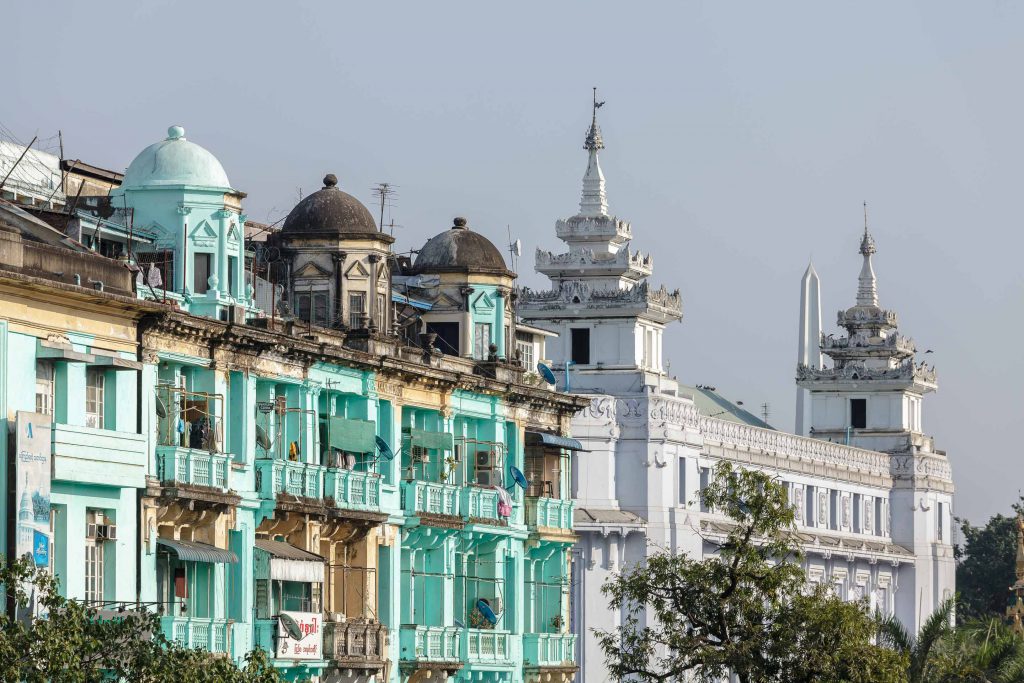
Today the building still houses the city authority, the Yangon City Development Committee (YCDC). Its mandate stems from colonial legislation and the 1922 Rangoon Municipal Act; however, the YCDC itself was created by the SLORC government in 1990.
The YCDC is independent from the government and raises its own revenue, but the government appoints the chairman/mayor. The current mayor, U Hla Myint, took office in 2011 and is a former brigadier general. He was previously ambassador to Brazil, Argentina and Japan. In December 2014 Yangon held its first municipal council elections, but these were marred by low turnout and a controversial “one vote per household” rule.
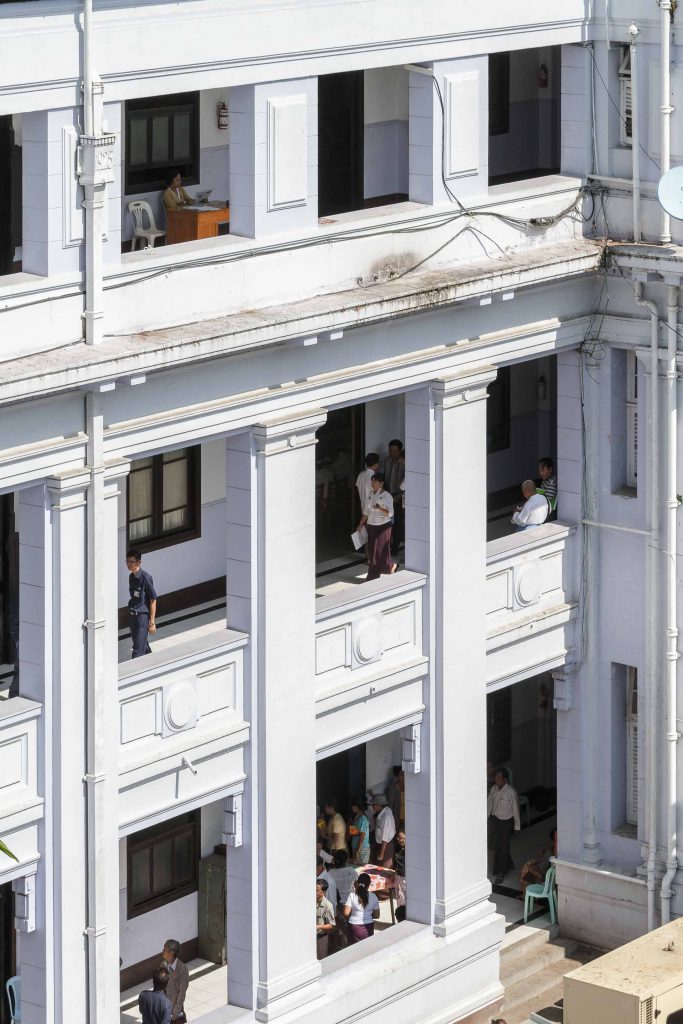
The YCDC plays an important role in urban conservation efforts. In the 1990s, the SLORC government allowed the razing of several heritage buildings. Following popular outcry, the YCDC drew up a Heritage List in 1996. The list, which contains 189 buildings, was the first of its kind for the city. Although the Yangon Heritage Trust (YHT) deems it incomplete, it remains an important benchmark. The YCDC and other partners (including the YHT and the Japan International Cooperation Agency, JICA) are developing new zoning and planning regulations. For more information about this, please see the chapter on urban planning on page 206.
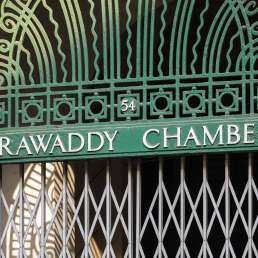
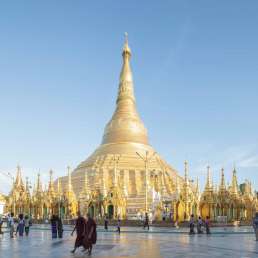
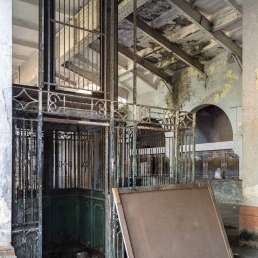
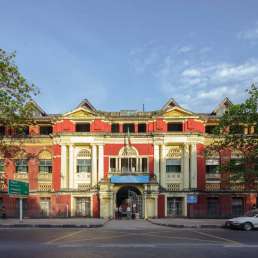
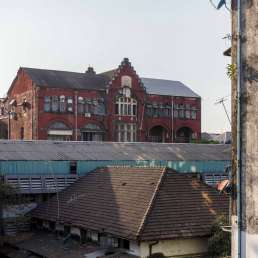
How many rooms are there?